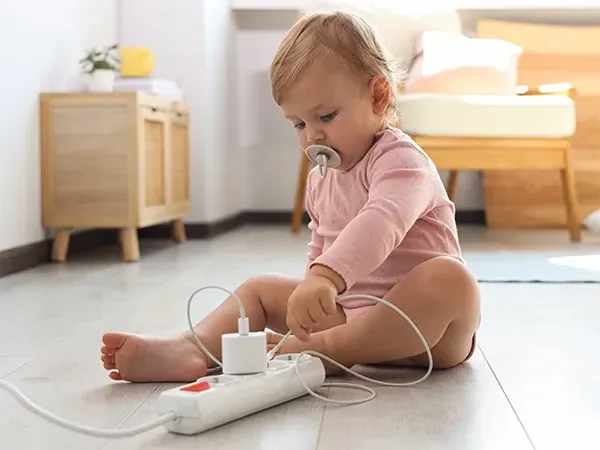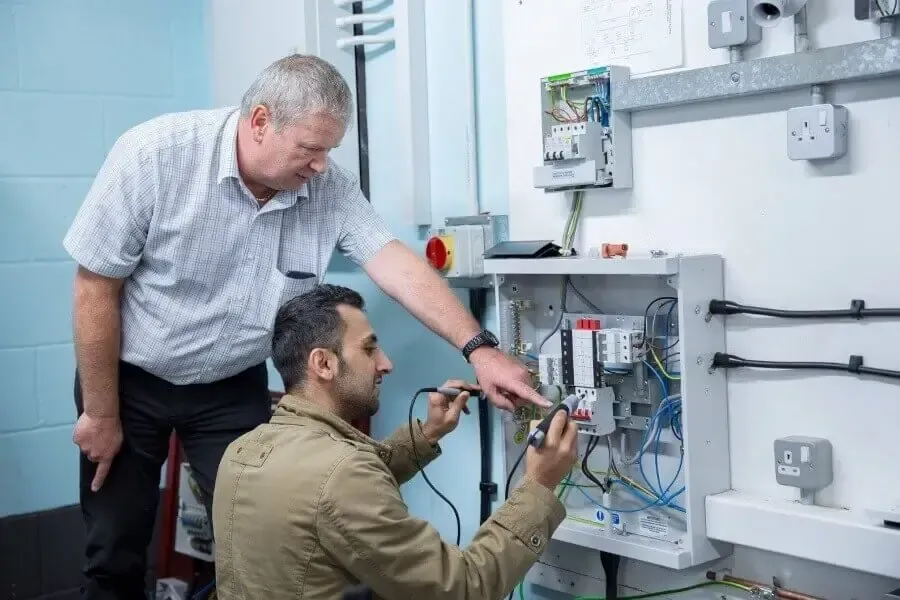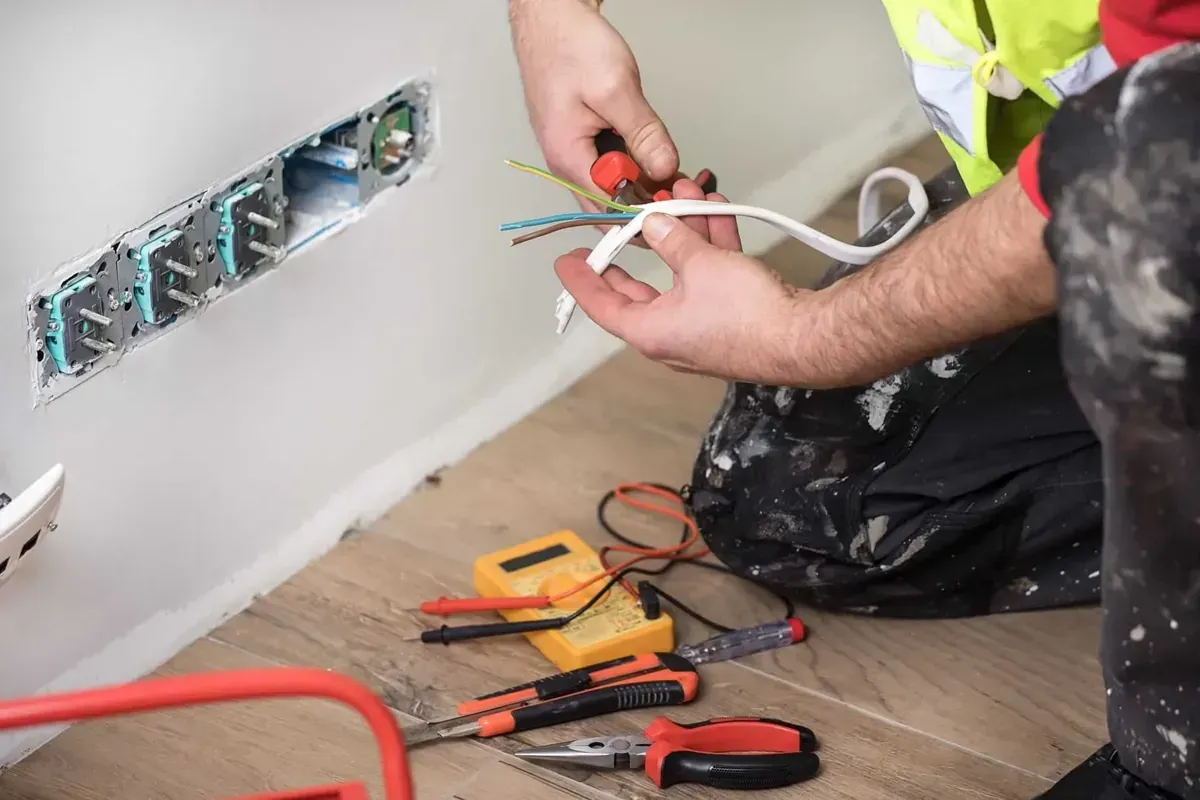Electrical Safety Tips for Children: Modern Parent's Complete Guide
Teaching electrical safety tips for children has become critical as homes fill with electronic devices and smart technology. Today's children interact with electricity from infancy through smartphones, tablets, and gaming systems. This exposure creates learning opportunities and increased risks requiring proactive parental intervention.
Modern electrical safety tips for children must address traditional hazards like outlets plus contemporary challenges such as device overheating and battery safety. Parents who understand these risks can better protect their children while fostering healthy technology relationships.
Age-Based Electrical Safety Strategies
Infants and Toddlers (Ages 0-3)
Very young children cannot comprehend electrical dangers, making physical prevention essential for electrical safety tips for children in this age group. Install sliding outlet plate covers, cord concealers, and appliance locks. Unlike simple plug covers, sliding plates provide superior protection while maintaining adult functionality.
Even pre-verbal children can begin learning through consistent verbal cues like "hot" or "ouch" associated with electrical items.
Elementary Age (Ages 4-10)
Children this age can grasp cause-and-effect relationships. Introduce electricity as invisible energy that powers devices but can be dangerous when misused. Compare electricity to fire - useful when controlled but harmful when it escapes.
Teach proper habits through guided practice. Show children how to grip plugs (not cords) when unplugging devices, identify frayed wires, and understand why water and electricity combinations are dangerous. These hands-on electrical safety tips for children build competence through supervised learning.
Adolescents (Ages 11+)
Teenagers require advanced electrical safety tips for children acknowledging their independence and technological sophistication. Discuss electrical load calculations, extension cord limitations, and grounding importance. Explain how overloading circuits creates fire risks.
Encourage teenagers to become electrical safety advocates for younger siblings. Teaching others reinforces their learning while developing leadership skills.
Technology-Focused Safety Guidelines

Personal Device Management
Today's children own multiple electronic devices, requiring specialized electrical safety tips for children addressing modern risks. Device overheating, battery swelling, and charging safety are primary concerns.
Children should inspect devices regularly for damage signs including cracked screens, swollen batteries, or unusual heat. Establish designated charging areas away from sleeping spaces. Teach children to use original manufacturer chargers and avoid cheap replacement cables lacking safety features.
Gaming and Entertainment Systems
Gaming systems present unique challenges due to high power consumption and extended operation. Consoles generate significant heat requiring proper ventilation. Children should keep vents clear and recognize overheating signs like unusual fan noise.
Teach children to use surge-protected power strips and properly shut down equipment rather than switching off displays. These electrical safety tips for children protect equipment while reinforcing good habits.
Situational Safety Scenarios
Weather-Related Precautions
Severe weather creates unique hazards requiring specific electrical safety tips for children. Teach the "30-30 rule" - seek shelter when thunder follows lightning by 30 seconds, wait 30 minutes after last thunder before resuming outdoor activities.
Social Situations
Children encounter electrical situations at friends' homes where safety standards may differ. Teach children to observe electrical conditions and speak up about problems like sparking outlets or overloaded circuits.
Role-playing scenarios help children practice refusing dangerous electrical activities while maintaining friendships.
Learning Strategies and Emergency Response
Experiential Learning
Children learn electrical safety most effectively through engaging activities. Use battery-powered circuits to demonstrate how electricity flows and what happens when circuits break. These controlled demonstrations illustrate principles while reinforcing safety concepts.
Present electrical scenarios and guide children through proper decision-making processes. This approach helps internalize electrical safety tips for children through critical thinking.
Community Resources
Fire departments and utility companies offer specialized electrical safety programs for children. These programs include interactive demonstrations and take-home materials reinforcing electrical safety tips for children.
Emergency Recognition and Response
Children must learn to identify electrical emergencies quickly. Teach recognition through sight (sparks, smoke), smell (burning plastic), sound (crackling, buzzing), and touch (unusual heat). These sensory cues help identify hazards before emergencies develop.
Children should practice decision sequences: assess situation, ensure personal safety, seek adult help, follow safety procedures. These structured electrical safety tips for children reduce panic during actual emergencies.
Effective emergency communication requires practice. Children should describe electrical emergencies clearly to adults and emergency services, including location, visible hazards, and immediate dangers.
Building Long-Term Safety Habits
Progressive Development
Electrical safety education should evolve with children's development, gradually increasing responsibilities. Start with basic awareness, progress to supervised practice, advance to independent decision-making, culminate in teaching others.
Teach children to evaluate their electrical safety knowledge and identify improvement areas. This metacognitive approach helps children take ownership of safety education.
Family Safety Culture
Electrical safety becomes most effective when integrated into family safety culture. Ensure all family members reinforce the same electrical safety tips for children. Inconsistent messages confuse children and undermine education efforts.
Practical Implementation
Create electrical safety checklists for different areas of your home. Include outlet safety, cord management, device inspection, and emergency procedures. Regular review of these checklists reinforces electrical safety tips for children through repetition and practice.
Document electrical safety milestones as children master new skills. This tracking helps identify areas needing additional attention while celebrating progress in electrical safety education.
Modern Challenges and Solutions
Smart Home Integration
Smart home devices introduce new considerations for electrical safety tips for children. Children should understand that smart devices still use electricity and require safety precautions despite wireless capabilities.
Teach proper operation procedures for voice-activated devices and respect for privacy settings. These modern electrical safety tips for children address contemporary technology while maintaining traditional safety principles.
Battery Technology
Modern devices use various battery technologies requiring specific safety knowledge. Children should recognize signs of battery problems including swelling, unusual heat, or device performance changes.
Establish proper charging habits including using appropriate chargers, avoiding overcharging, and charging in well-ventilated areas. These electrical safety tips for children address contemporary battery safety concerns.
Conclusion
Effective electrical safety education requires understanding developmental capabilities, addressing modern challenges, and building progressive learning experiences. Success depends on combining environmental modifications, hands-on learning, and consistent reinforcement across all environments. Investment in comprehensive electrical safety education creates safety-conscious adults who protect themselves and others throughout their lives.
Ensure Your Family's Electrical Safety
When you need reliable electrical services for home safety evaluations, modern installations, or complete electrical inspection services, trust Bee-lectric. Contact us today for expert electrical services that create secure homes for families.



